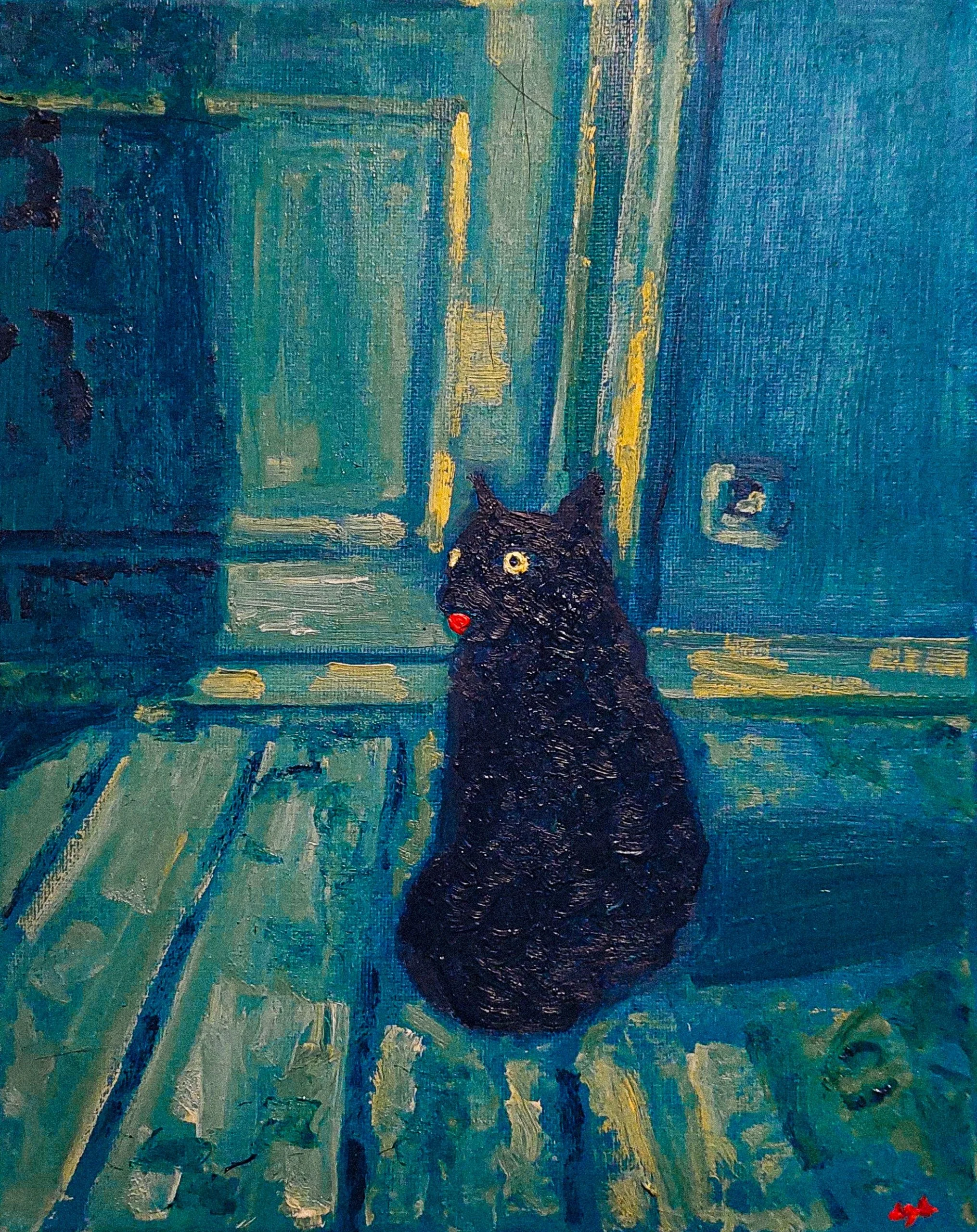
LILOKA
What’s the intention behind the dominance of blue and a subtle touch of red in your paintings?
“Blue, to me, is a color that holds depth both emotionally and visually. It carries the weight and stillness of the vast ocean, while also being surprisingly rare in nature. Red, on the other hand, is common above water, but it’s the first color to vanish as you descend into the ocean.
So you almost never see red and blue side by side occurring naturally, but when you do, it’s striking, and it's difficult to forget. When I use blue and red next to each other in my paintings, I believe they start moving in a sense. As blue recedes and deepens, red comes forward, almost like a breath within the blue. Since they sit on opposite ends of the visible spectrum, they challenge the eye a bit, they resist and complement each other at the same time in a beautiful way. It excites me a lot to see how contrasting colors act, react, and interact with one another.”


We see some living beings in your art, whales in particular. How and why do they inspire you?
“My main profession is marine biology, and I research marine mammal acoustics. I'm fascinated by how whales and dolphins use sound to communicate, navigate, and socialize. Spending time with them, listening to their voices, studying and reading about them, has shaped how I see them, not just as animals, but as deeply intelligent, wise beings. They’re not so different from us. And yet, overtime, we’ve failed to coexist with them, so now we carry the responsibility to protect them, to let them be, simply as they are. Whales hold so much scale, physical, ecological, intellectual, emotional. They challenge how I think about time, space, and connection. In my art, I don’t always depict them realistically, they often appear in simple or abstract forms. But painting them is a way for me to stay in dialogue with what I feel most curious about, and often most worried about. They represent something larger than us, and yet vulnerable. I feel deep respect for whales, for all animals, for the ocean and nature as a whole. And just like everything else I would ever create, my urge to make art is inseparable from that connection to the natural world.”
What would you want from future to bring to your art?
“I hope the future brings more connection, between my art, myself, and nature; between disciplines; and between people. I’m also curious about working at larger scales, maybe outdoors, maybe on a canvas so big I’d have to jump to reach the last brush stroke.
I want to keep exploring how something visual can hold presence and offer a space for reflection, not in a grand, overwhelming way, but in a quiet, lingering sense. Something that stays with you. And it would honestly put a smile on my face to imagine someone looking at my work and feeling something, something personal, individual, and then that’s it, actually. That would be enough.”

